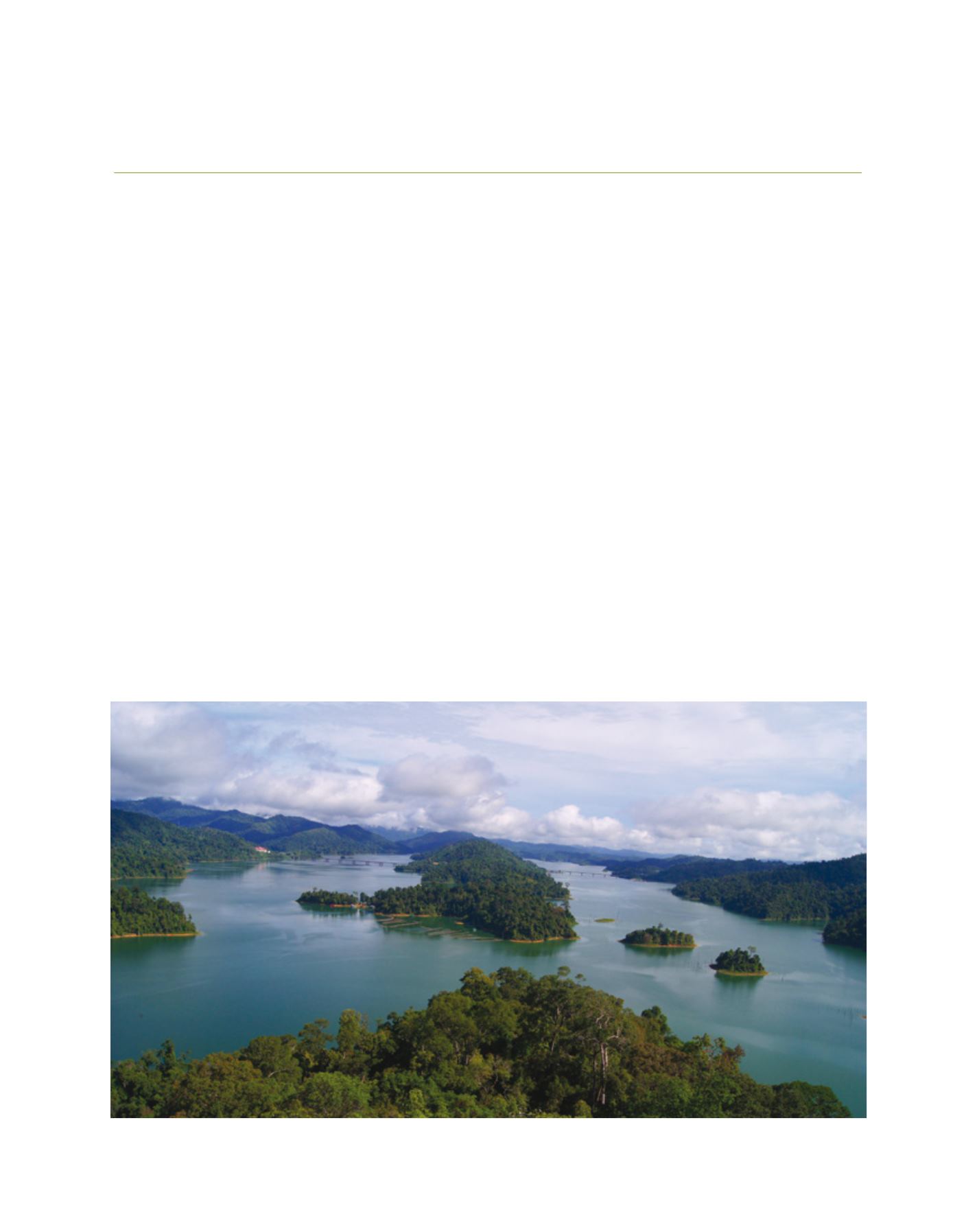

[
] 148
Sustainable management of lakes in Malaysia
Zati Sharip, Senior Research Officer, Research Centre for Water Quality and Environment;
Saim Suratman, Director, Research Centre for Geohydrology; and Ahmad Jamalluddin Shaaban, Director General,
National Hydraulic Research Institute of Malaysia, Ministry of Natural Resources and Environment, Malaysia
L
akes, natural or man-made, are important water resources
for Malaysia. These inland water bodies cover an area of
over 10,000 hectares and contain more than 30 billion
cubic metres of water. Most of these water bodies have multiple
functions including the provision of water supply for domestic,
industrial and agricultural needs, hydroelectricity generation,
flood mitigation, and recreational and tourism destinations.
However, deterioration of water quality in Malaysia’s freshwater
systems including lakes, resulting from rapid development within
the catchment, is a serious concern.
According to a preliminary assessment on the status of eutrophication
of lakes in Malaysia, conducted by the National Hydraulic Research
Institute of Malaysia (NAHRIM) in collaboration with the Academy
of Sciences Malaysia (ASM) in 2005, about 62 per cent of 90 major
lakes that were studied were in a nutrient-rich or eutrophic state,
while the rest were categorised as nutrient-balance or mesotrophic.
Some of the eutrophic lakes, such as Lake Aman in Selangor and
Lake Sembrong in Johor, are threatened by algae bloom incidents,
while Lake Chini in Pahang is vulnerable to excessive
growth of aquatic plants. The excess nutrients were
largely induced by point sources and non-point sources
originating from natural and anthropogenic activities
within the lake catchment. Concerted efforts in the form
of national cooperation among government agencies,
departments and private sectors were crucial to address-
ing these serious eutrophication issues, and these efforts
have been initiated and fostered since 2007.
Sustainable lake management
A two-day colloquium among stakeholders on the
theme of Status and Issues of Lakes and Reservoirs
Management in Malaysia was jointly organized by
NAHRIM (under the auspices of the Ministry of Natural
Resources and Environment or NRE), ASM, the Inter
Academy Panel and the Japan Science and Technology
Agency at NRE in August 2007. Its aim was to advo-
cate greater understanding on the status and issues
W
ater
E
ducation
and
I
nstitutional
D
evelopment
Temenggor Lake is one of the biggest man-made lakes in Peninsular Malaysia
Image: Academy of Sciences Malaysia


















